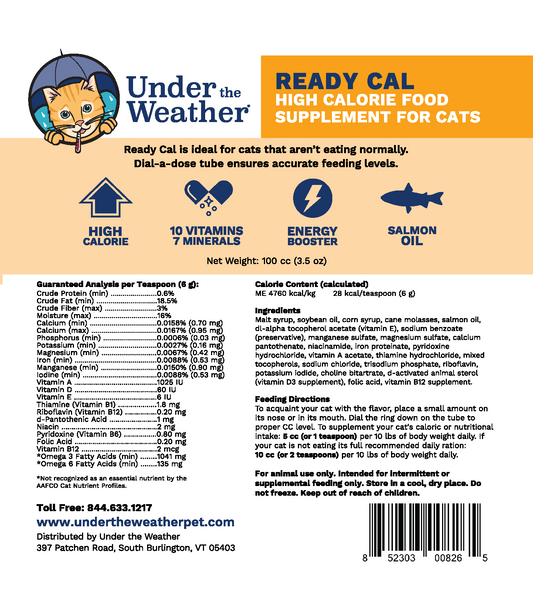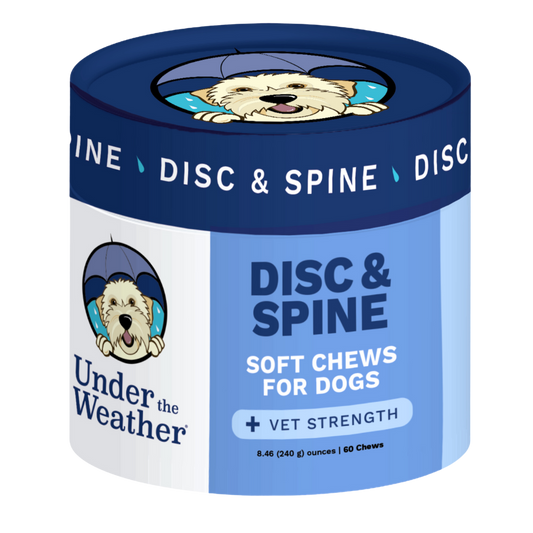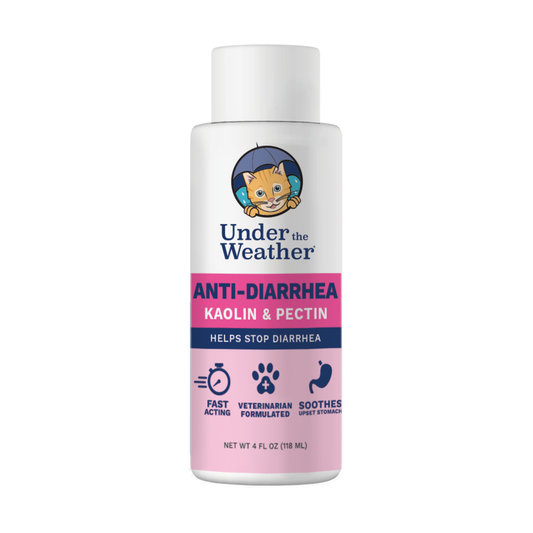A bland diet can be a beneficial option when your dog is experiencing digestive issues or recovering from an illness. It consists of easily digestible foods that are gentle on the stomach and help to soothe inflammation. Understanding the basics of a bland diet, how to transition your dog to this diet, creating a balanced meal plan, and addressing potential challenges are crucial aspects to consider. Additionally, maintaining your dog's health on a bland diet requires regular check-ups and monitoring their weight and energy levels. The dog lovers here at Under the Weather are well-versed in this subject and here to shed light on this aspect of canine care.

Understanding the Bland Diet for Dogs
When your dog experiences vomiting, diarrhea, or gastrointestinal upset, a bland diet can provide relief. The goal is to give your dog's digestive system a break while providing necessary nutrients. A bland diet typically includes foods that are low in fat, fiber, and spices, making them easier to process.
The Importance of a Bland Diet
A bland diet aims to alleviate symptoms by reducing irritation in the digestive system. It can help soothe inflammation and promote healing. By providing easily digestible foods, the digestive system can restore its balance and function more efficiently.
When a dog's digestive system becomes upset, it can lead to discomfort and distress. Vomiting and diarrhea can cause dehydration and nutrient deficiencies. A bland diet is a gentle way to support the healing process and provide the necessary nutrients for recovery.
Additionally, a bland diet can help identify potential food allergies or intolerances. By eliminating common allergens and introducing simple, easily digestible foods, you can pinpoint any triggers that may be causing gastrointestinal upset in your dog.
Key Components of a Bland Diet
- Protein: Lean meats like chicken or turkey are preferred as they are easier to digest. Protein is an essential component of a dog's diet. It provides the necessary amino acids for muscle growth and repair. When choosing lean meats for a bland diet, opt for skinless and boneless options to minimize fat content. Boiling or baking the meat can help make it even more easily digestible.
- Carbohydrates: Cooked rice or pasta can be used to provide energy without causing stress on the digestive system. Carbohydrates are an important source of energy for dogs. Cooked rice or pasta can be easily digested and provide the necessary fuel for your dog's activities. It is important to cook the grains thoroughly to ensure they are soft and easily digestible.
- Fats: Limit fat intake, as it can worsen digestive symptoms. Use a small amount of olive oil if necessary. Fats play a crucial role in a dog's diet, but when it comes to a bland diet, it's important to limit fat intake. High-fat foods can exacerbate digestive symptoms and prolong the healing process. However, a small amount of healthy fat, such as olive oil, can be added if necessary to provide some flavor and additional nutrients.
- Vegetables: Boiled or steamed vegetables like carrots or green beans can be added for additional nutrients. Vegetables are a great source of vitamins, minerals, and fiber. Boiled or steamed vegetables like carrots or green beans can be added to a bland diet to provide additional nutrients. These vegetables are gentle on the digestive system and can help support overall health.
- Supplements: Consult your veterinarian to determine if any additional supplements are necessary to maintain a balanced diet.
While a bland diet can provide the necessary nutrients for a dog's recovery, it's important to consult with your veterinarian to ensure a balanced diet. Depending on your dog's specific needs, your vet may recommend additional supplements to support healing and overall health.
Remember, a bland diet is not a long-term solution. It is meant to be a temporary measure to help your dog's digestive system recover. If symptoms persist or worsen, it is important to seek veterinary advice for a proper diagnosis and treatment plan.
Transitioning Your Dog to a Bland Diet
Sudden changes to your dog's diet can cause further digestive upset. It's important to gradually transition them to a bland diet.
When it comes to our furry friends, their digestive systems can be quite sensitive. Just like humans, dogs can experience digestive issues such as vomiting, diarrhea, or loss of appetite. These symptoms can be distressing for both the dog and the owner. However, there is a solution - transitioning your dog to a bland diet.
Signs Your Dog May Need a Bland Diet
If your dog is experiencing any of the aforementioned symptoms, it could be an indication that they need a bland diet. These symptoms can be caused by various factors, including food allergies, gastrointestinal infections, or even stress. It's always best to consult your veterinarian to confirm if a bland diet is suitable for your dog.
During your visit to the vet, they will conduct a thorough examination of your dog and may recommend a bland diet as part of the treatment plan. A bland diet consists of easily digestible foods that are gentle on the stomach. It typically includes ingredients such as boiled chicken, white rice, and plain pumpkin puree.
How to Gradually Introduce a Bland Diet
Once your veterinarian has given the green light for a bland diet, it's time to start the transition process. Remember, a gradual introduction is key to avoid any further digestive upset.
Begin by mixing a small portion of the bland diet with your dog's regular food. This mixture will help your dog become accustomed to the new flavors and textures. It's important to monitor their reaction during this stage. If they show any signs of discomfort or intolerance, consult your veterinarian immediately.
Over several days, gradually increase the proportion of the bland diet in each meal. For example, you can start with a 25% bland diet and 75% regular food ratio, then progress to a 50-50 ratio, and so on. The goal is to have your dog exclusively on the new diet eventually.
During this transition period, keep a close eye on your dog's overall well-being. Monitor their bowel movements, appetite, and energy levels. If you notice any concerning changes, consult your veterinarian for further guidance.
Remember, every dog is unique, and their response to a bland diet may vary. Some dogs may adapt quickly, while others may require a longer transition period. Patience and consistency are key during this process.
Once your dog has successfully transitioned to a bland diet, it's important to maintain this new feeding regimen until advised otherwise by your veterinarian. They will guide you on how long your dog should remain on the bland diet and when it's safe to reintroduce their regular food.
By gradually transitioning your dog to a bland diet, you are providing them with the necessary support to heal their digestive system and alleviate any discomfort they may be experiencing. Remember, always consult your veterinarian for personalized advice and guidance tailored to your dog's specific needs.
Creating a Balanced Bland Diet
A balanced bland diet ensures that your dog receives all the necessary nutrients for optimal health and recovery. When it comes to your furry friend's well-being, it's important to provide them with a diet that is gentle on their stomach and easy to digest. A bland diet can be particularly beneficial for dogs who are experiencing digestive issues or recovering from an illness.
When formulating a bland diet for your dog, it's crucial to include essential nutrients to support their overall health. While the focus is on gentle foods, it's important to consult your veterinarian to ensure that your dog is getting the right balance of proteins, carbohydrates, healthy fats, vitamins, and minerals. Each of these nutrients plays a vital role in maintaining your dog's well-being and aiding in their recovery process.
Essential Nutrients in a Bland Diet
Proteins are the building blocks of life and are essential for your dog's growth, repair, and maintenance of body tissues. Lean meats such as boiled chicken or turkey can be excellent sources of high-quality protein for your dog's bland diet. These meats are not only easily digestible but also provide essential amino acids that are necessary for your dog's overall health.
Carbohydrates, on the other hand, are a vital energy source for your dog. Cooked rice or pasta can be included in their bland diet to provide them with the necessary carbohydrates. These carbohydrates are gentle on their stomach and help in maintaining their energy levels throughout the day.
Healthy fats, such as those found in fish oil or flaxseed oil, are important for your dog's overall well-being. These fats provide essential fatty acids that support their immune system, promote healthy skin and coat, and aid in the absorption of fat-soluble vitamins.
Vitamins and minerals are essential for various bodily functions and should be included in your dog's bland diet. Fruits and vegetables, such as carrots or green beans, can be cooked and added to their meals to provide them with a range of vitamins and minerals. These nutrient-rich foods not only add flavor to their diet but also contribute to their overall health and well-being.
Foods to Include and Avoid
When creating a bland diet for your dog, it's important to incorporate foods that are easy to digest and unlikely to trigger allergies or stomach upset. Lean meats, such as boiled chicken or turkey, are excellent choices as they are low in fat and gentle on your dog's stomach. These meats provide the necessary protein without adding unnecessary strain on their digestive system.
Cooked rice or pasta can be included as a source of carbohydrates in your dog's bland diet. These grains are easily digestible and provide a good source of energy for your furry friend. However, it's important to ensure that the rice or pasta is well-cooked to make it easier for your dog to digest.
When it comes to vegetables, it's best to opt for well-cooked options such as carrots or green beans. These vegetables are not only gentle on your dog's stomach but also provide essential vitamins and minerals. However, it's important to avoid vegetables that are known to cause gas or digestive issues, such as broccoli or onions.
While it's important to include certain foods in your dog's bland diet, there are also ingredients that should be avoided. Foods that are high in fat, spices, and excessive fiber should be excluded from their meals as they can worsen digestive symptoms. It's best to stick to lean meats, cooked rice or pasta, and well-cooked vegetables to ensure that your dog's bland diet is gentle on their stomach and promotes their overall well-being.

Potential Challenges and Solutions
Transitioning to a bland diet or maintaining it may present some challenges. Being prepared and proactive can help resolve these issues.
Dealing with a Picky Eater
If your dog refuses to eat the bland diet, try warming the food slightly or adding a small amount of low-sodium broth for added flavor. Gradual introduction and patience are essential. Consult your veterinarian for alternative options if your dog continues to be a picky eater.
Addressing Nutritional Deficiencies
While a bland diet provides temporary relief, it's important to ensure that your dog receives adequate nutrition. Regularly monitor their weight and energy levels and consult your veterinarian if you notice any signs of nutritional deficiencies.
Maintaining Your Dog's Health on a Bland Diet
Regular health check-ups and ongoing monitoring are vital to ensure your dog's well-being on a bland diet.
Regular Health Check-ups
Schedule routine check-ups with your veterinarian to assess your dog's overall health and make any necessary adjustments to their diet. This will help to address any underlying conditions and monitor the progress of the bland diet.
Monitoring Your Dog's Weight and Energy Levels
Weigh your dog regularly to track any significant changes. Monitor their energy levels and overall behavior to ensure they are thriving on the bland diet. If you observe any concerns, consult your veterinarian immediately.
Conclusion
A bland diet can be an effective tool to address digestive issues and aid in your dog's recovery. Understanding the basics of a bland diet, transitioning your dog gradually, creating a balanced meal plan, addressing potential challenges, and maintaining their health are crucial steps. Remember to consult your veterinarian for guidance specific to your dog's needs. With proper care and attention, a bland diet can help your dog bounce back to good health.












